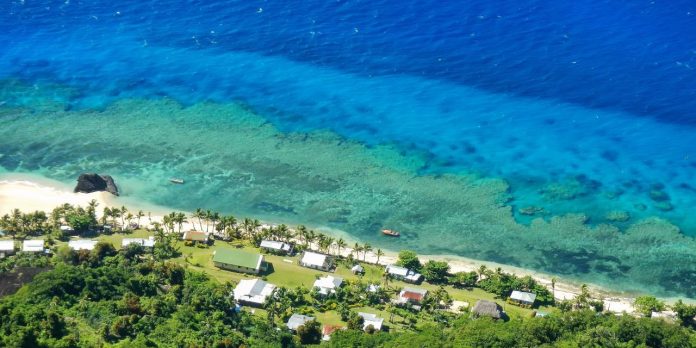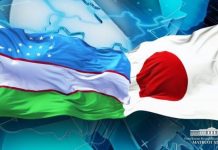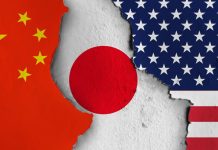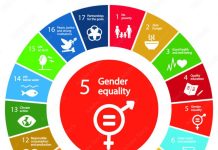By Dr. Günther Baechler
Wars in Ukraine and the Middle East make us forget that climate change has also long since claimed its victims. Its geographical effects are inevitably fueling social stress, political tensions and even military violence.
Thirty years ago, two years after the Rio Conference on Environment and Development in 1992, a joint research project by Swisspeace and ETH Zurich came to the following conclusion: “The dramatic intensification of global, regional and local environmental crises is making ecological destruction an increasingly important factor in conflicts.” At that time, field research focused on the conflict potential of drought and desertification in the Sahel, of international rivers (for example, in Central Asia) and of destructive mining (including the copper mine on Bougainville). Among other things, one dissertation dealt with the contribution of the human-ecological stress situation on the “thousand hills” of Rwanda to the genocide of spring 1994. CO2 emissions and climatic changes only emerged nebulously on the horizon as factors influencing crises and conflicts.
Meanwhile, “climate change” is pushing all other issues into the background. When run-down regimes, such as the one in Syria, blame all problems in the country on global climate change, you have to ask whether everything is going right. It was precisely this question that was critically examined at a recent joint symposium in Hamburg organized by the Institute for Peace Research and Security Policy at the University of Hamburg and the Toda Peace Institute. Researchers from the Pacific Islands Countries of Fiji, Tuvalu, Cook Islands, Samoa and Vanuatu, in dialogue with participants from Germany, Japan, Australia, New Zealand, Finland, Norway and Denmark, among others, underlined the complex and multi-layered threats to the Pacific islands. The action-oriented researchers opposed international “climate reductionism” and the deterministic view associated with it, according to which rising seas would mean the inevitable demise of the island world. The indigenous populations counter the doomsday fantasies with an alternative narrative that draws on their rich philosophical and spiritual sources. This seems to be one of the reasons why, despite the enormous challenges, the indigenous people radiate an astonishing serenity and, contrary to the widespread ‘victim’ narrative, point to their own ‘agency’. The indigenous researchers postulate:
“The whole thing must be preserved!”
The term “(Pasifika) relationality” is intended to highlight the deep and ultimately boundless relationships between man and nature, past and future, ancestors and future generations. The individual only exists as part of the whole. Or, as one participant from Samoa put it, “We have no land, we are the land. We have no sea, we are the sea.” The land is “the anchor of our identity”, added a participant from Fiji. This means that the indigenous population has no choice but to use all their physical and spiritual strength and the innovative application of traditional knowledge that spans generations in order to maintain their “place” together with the graves of their ancestors on the land they have inherited. Resettlements—if at all possible—from coastal to higher areas, for example, are therefore painful and traumatic events. It is important that resettlement is a community decision and that it is taken voluntarily and after all other adaptation steps have been exhausted.
Structural and cultural violence
The indigenous people certainly see climate change as a major challenge. It is not only causing the sea to rise, but also an increase in devastating cyclones and other extreme weather events. These cause them more concern in their everyday lives than the supposed sinking of the islands. Islands are not the Titanic.
The indigenous people experience the threat and the possible loss of their “place” in a double sense:
- Climate change affects the indigenous population in the form of structural violence, which is the fault of the industrialized countries and the former colonial rulers. The violence, which is perceived as global injustice, manifests itself as a growing gap between the current situation and what is possible and feasible in the future to lead the island world into a secure future.
- The current and expected loss of livelihoods leads to social upheaval and political tensions, especially when local governments allow themselves to be taken in by the former colonial rulers for quick “solutions” without consultation. These include evacuations, resettlement programs and forced forms of climate migration, for example, to Australia, New Zealand and the USA (especially Hawaii). The loss of land brought about by “false emergency aid” and local politics is perceived by the indigenous people as “cultural violence”, which threatens the very core of the community by breaking up the holistic relationality.
Structural or cultural violence does not necessarily lead to physical or armed violence. As the Pacific islanders impressively demonstrate, they are trying to achieve innovative and peaceful results through dialogue, resilience and international diplomacy. So far, only Bougainville has seen a major civil war in the greater region, which was partly caused in the 1990s by the catastrophic environmental impact of a copper mine operated by Rio Tinto Zinc.
For comparison, in other geographical contexts, massive acts of violence can also be attributed to environmental changes. As the civil war and mass displacement in Darfur (West Sudan) show, the increasing pressure on land resources, changing land use rights and patterns, pronounced droughts and climate-induced desertification have fueled inter-tribal as well as regional and cross-border violent conflicts. With the help of the military junta of El Bashir, these culminated in the genocidal civil war that broke out in 2004, displacing millions of people. As the then leader of the janjaweed militia and war criminal Hemeti could not be handed over to the ICC, he is still able to reduce Sudan to rubble in a power struggle with General Burhan; he is doing this not least with the help of the Wagner Group and the subsequent Russian Africa Corps, which is particularly keen on the gold mines in North Darfur. What is happening in Darfur today applies to the entire Sahel region: fragile statehood, military coups, terrorist and criminal violence and dysfunctional gerontocracies (Cameroon) now characterize an entire region of the world where livelihoods are already under widespread threat from climate change and local environmental degradation.
Learning from the Pacific way could also be a constructive approach elsewhere that strives for peace, security and sustainability. Against the backdrop of potential conflicts and an island population that has become vulnerable, the widely supported “Toda Pacific Declaration on Climate Change, Conflict and Peace” of 2018 is a milestone. After an introductory description of the problem, it states: “Therefore, responses to climate change adaptation require both conflict prevention measures and conflict-sensitive approaches that prioritize local contexts and the maintenance of peace.” A whole list of concrete measures follows, ranging from the adaptation of international environmental law and the reduction of greenhouse gas emissions to local, culturally adapted and nature-related activities. “Rights of nature” are contrasted with an anthropocentric exploitation scheme. The motto is to grow together and not at the expense of others (other people and other non-human living beings as well as future generations).
Those who are literally in danger of losing the ground under their feet should remember their roots. “After me, the deluge” has never and nowhere been a sensible answer.
Dr. Günther Baechler was head of the joint research project by Swisspeace and ETHZ project in the 1990s: Environmental Degradation and Conflict. After 2007, he returned to Darfur as Switzerland’s special envoy. He was a mediator in the “Doha Process” led by the UN and the AU.






